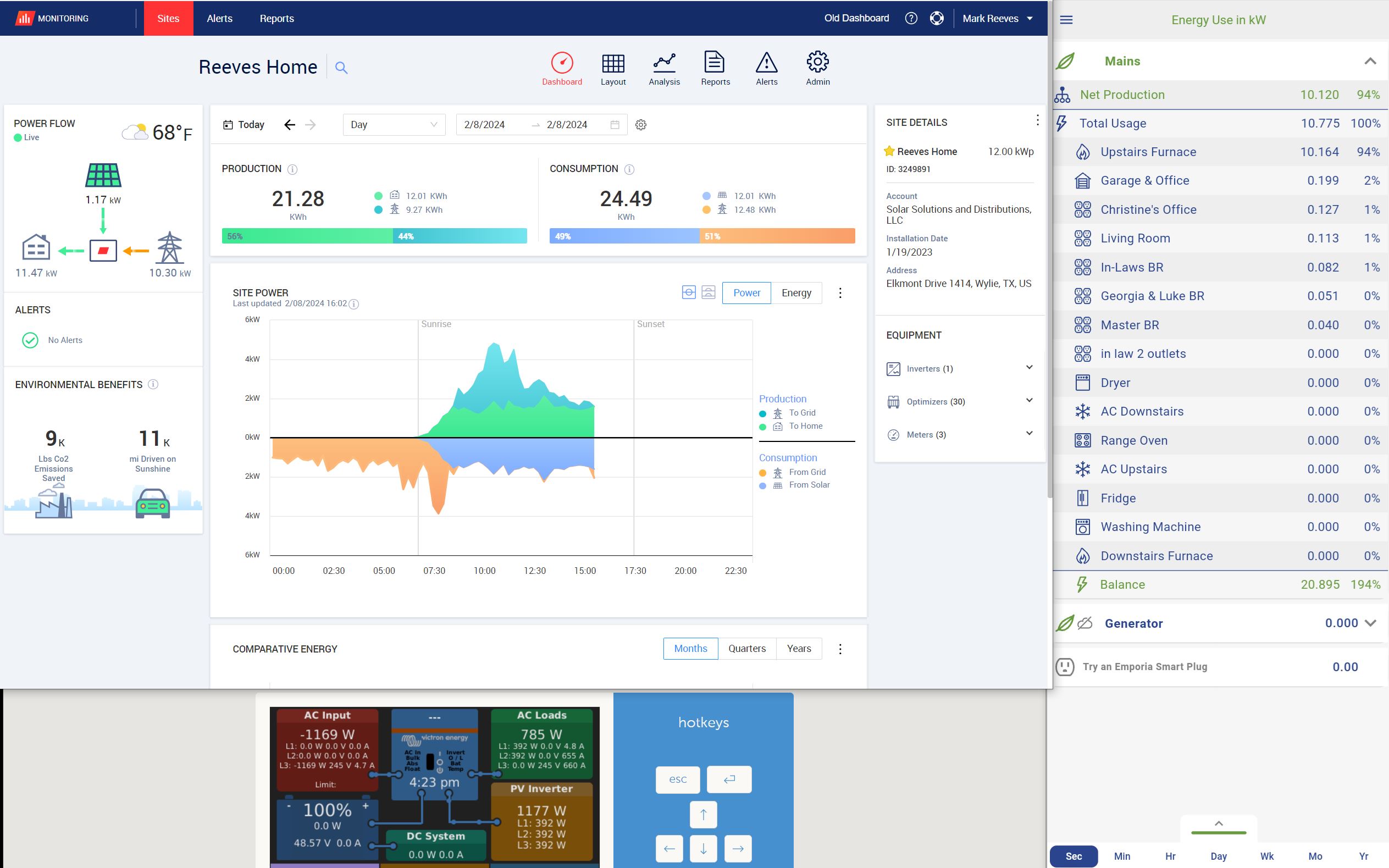Has anyone successfully managed to pull data from an emporia vue and get it to display in Venus OS? I found some stuff on getting it into HA and using Grafana or Vuefana in this case but was not successful at getting them to work. This is what Emporia Community was able to offer me:
Community Forum Post: https://community.emporiaenergy.com/topic/api-to-pull-data/
Open Source Projects:
https://github.com/helgew/emporia-downloader
https://pypi.org/project/pyemvue/
https://github.com/magico13/ha-emporia-vue
https://github.com/jertel/vuegraf


